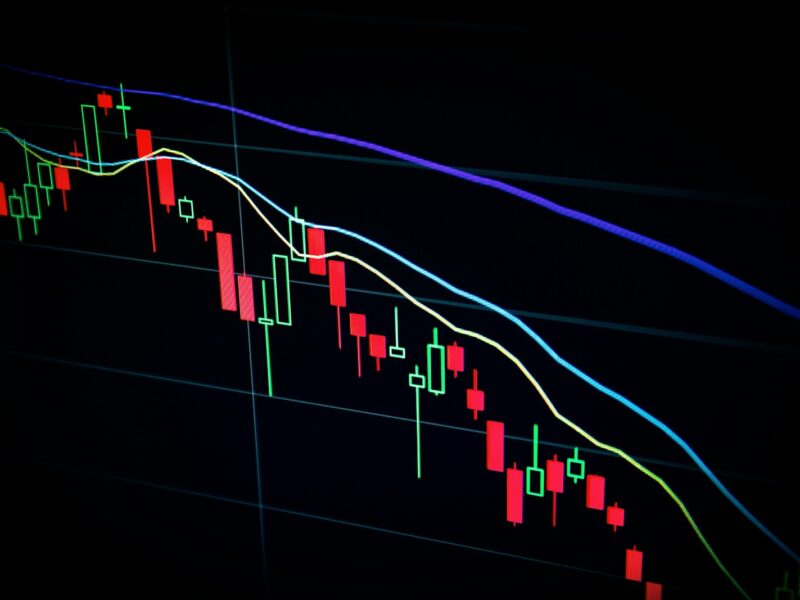The discount rate and the required rate of return represent core concepts in asset valuation.
These terms are most frequently used when comparing the market price of an asset vs the intrinsic value of that asset to determine if it represents a suitable investment.
We highlight what each term means and why they represent similar but distinctively different concepts in asset valuation.
What is the Discount Rate?
At its most basic level, the discount rate represents the rate (usually expressed as a percentage) used to determine the present value of a future cash flow.
The discount rate represents the compensation that investors require to assume the risk of investing in that asset in hopes of receiving the future cash flows generated from it.
The individual components of the discount rate include the risk free rate and the required rate of return for that asset type. In other words, the discount rate equals the risk free rate + the required rate of return.
- Test out our Free Net Worth Calculator!
What is the Risk Free Rate?
The risk free rate is simply the percentage return on an asset that is earned by an investor without assuming any risk of loss. There is no single value that represents the risk free rate.
Rather investors estimate the risk free rate by looking to the yield of sovereign debt instruments. In the US, this is most commonly estimated by looking at the yield on Treasury Bills and Treasury Bonds issued by the US Government.
The US government has the ability to print more currency to meet interest payments or to refinance outstanding government debt, so these assets are widely assumed to have no default risk.
That is why the yield for the various issuances of debt backed by the US government is assumed to represent an accurate proxy of the risk free rate.
How to Calculate the Discount Rate?
If you are trying to calculate a discount rate for an asset that is publicly traded, like a stock or a bond, you can easily compute this value by using the current market price of that asset.
This is easier to do if you trying to calculate the discount rate for a bond because the required present value and future value of the cash flows are readily available based on the bond indenture details.
However, you can still calculate the discount rate for a stock based on the dividends paid and by making an estimate of the growth of those dividends. This is a relatively easy calculation to do if you have a financial calculator or excel and you use the internal rate of return function.
In order to solve for the internal rate of return or the discount rate implied by the current market price, you would need the following inputs:
- Current market price.
- Year ahead dividend to be paid.
- Required rate of return for that issuer.
- Expected Dividend growth rate.
We can easily find the current stock price and we will know what the current year ahead dividend will be (assuming this is a dividend paying stock), and we can estimate the expected growth rate of those dividends by looking at the past growth rate.
However, we need to make an estimate for the Required rate of return.
What is the Required Rate of Return?
As previously mentioned, the required rate of return for an asset represents the minimum return investors require to compensate them for the additional risk assumed in owning that asset.
So the required rate of return for an asset could be considered as the sum of the risk free rate plus a premium related to the risk of that asset.
Calculating the Equity Risk Premium
The required rate of return for a stock equals the risk free rate plus the equity risk premium. At its core, the equity risk premium is an estimate and as such many people can calculate this value with slightly different methods which can result in different estimates of asset value.
The two primary methods of calculating the equity risk premium include:
- Historical average differences between equity market returns and government debt returns.
- Future estimates of the differences between equity market returns and government debt returns.
What is the Historical Equity Risk Premium for US Stocks?
Arriving at at equity risk premium using historical returns offers a number of important benefits which include availability of objective data and the ability to use date over a long time horizon. The major considerations you need to make when utilizing historical estimates include:
- Selecting an appropriate index to represent equity market returns (S&P 500, Wilshire, etc.).
- Using an appropriate time period from that index (number of years).
- The type of metric utilized (average return, geometric return).
- Which risk free rate to use (T-bills vs longer dated government bonds).
The Credit Suisse Global Investment Returns Sourcebook for 2018 includes detailed historical estimates for the annualized US stock market equity risk premium based on geometric returns over the last 118 years:
- 5.6% US Equity risk premium based on T-bills.
- 4.4% US Equity risk premium based on long term government bonds.
It’s important to note that these values were calculated by taking the geometric difference between the equity return over a given period and the risk free rate over that same period.
Other notable estimates provided by the sourcebook based on 118 years of data (1900 to 2017) include:
- Annualized nominal US equity return: 9.6%.
- Annualized nominal US government bond return: 4.9%.
- Annualized nominal US government T-bill return: 3.7%.
- Annualized inflation: 2.9%.
Similarly, the real annualized returns (backing out the impact of inflation) over the last 118 years include:
- Real Annualized Return US Equities: 6.5%.
- Real Annualized Return US Bonds: 2%.
- Real Annualized Return US T-bills: .8%.
Note: the annualized US equity returns subtracted by the corresponding bond and T bill returns do not directly equal the equity risk premium due to the impact of calculating the geometric mean.
Therefore, based on data from historical estimates we could estimate the required rate of return for equity to be 9.3% (4.4% equity risk premium over US government bonds + 4.9% nominal US government bond annualized return).
Note that the required return for equity equals 9.3% regardless of whether you use T-bills or government bonds.
- Acorn is offering a $5 Referral bonus for new signups.
Using the Required Rate of Return to Calculate Market Implied Discount Rate for a Stock
Now that we have an estimate for the required rate of return for US equities, we can use this to calculate the discount rate implied by the current stock price assuming we are calculating the discount rate for a dividend paying stock.
Before we can do this, we need to complete one more step and estimate the required rate of return for that particular stock which is a different required rate of return than the general US stock market which we estimated to be 9.3%.
Capital Asset Pricing Model
The capital asset pricing model represents a very common way to estimate the required equity return for a given stock. This model utilizes the required rate of return for the broad equity market and makes an adjustment for the individual volatility of that particular stock relative to the equity market as a whole.
This adjustment factor is referred to the beta of a stock. A stock’s beta represents the sensitivity of that stock’s returns compared to the overall equity market.
The overall US stock market would have a beta of 1. An individual stock that is more volatile than the overall stock market would have a beta of greater than 1 and a stock that is less volatile than the overall stock market would have a beta of less than 1.
Using the CAPM Formula to Estimate the Required Return for a Stock
The required return for an individual stock = the current expected risk free rate of return + Beta × equity market risk premium. We can use the historical estimates for the risk free rate of return (4.9% based on US government bonds) and the equity market risk premium (4.4% equity risk premium based on US government bonds).
Now we just need an estimate of Beta for our stock to arrive at that stock’s required rate of return.
How to calculate Beta for a stock
Beta is estimated using a statistical regression that compares the returns of an overall stock index to the returns of an individual stock. The stock’s beta is estimated using a least squares regression of the asset’s returns and the stock market index’s returns.
You can use Yahoo Finance to find the Beta for any publicly traded stock. Let’s compare the following stocks Beta as calculated by Yahoo Finance:
- Facebook: .77 Beta.
- Texas Pacific Land Trust: .68 Beta.
- Johnson & Johnson: .59 Beta.
Facebook has a .77 Beta and Johnson and Johnson has a .59 Beta. The difference in Beta is entirely due to Facebook being a more volatile stock compared with Johnson and Johnson. However both Facebook and Johnson and Johnson are considered to be individually less volatile than the overall stock market.
If we want to estimate the required rate of return for Johnson and Johnson and Facebook, we would use the following formula:
- Johnson & Johnson estimated required rate of return: 4.9% + (.59 × 4.4%) = 7.5%.
- Texas Pacific Land Trust estimated required rate of return: 4.9% + (.68 × 4.4%) = 7.9%.
- Facebook estimated required rate of return: 4.9% + (.77 × 4.4%) = 8.3%.
Understanding the Limitations of your Estimates
It is important to acknowledge the limitations of your estimates. First off this is an estimate based on historical data. The future may be different from the past so the historical data we utilized may not be as relevant going forward.
This also applies to Beta. Beta represents historical return differences between a given stock and the overall stock market. Depending on the index you use and the time period, you value of Beta can change fairly dramatically.
However, with that said, we used 118 years of geometric data for historical market estimates and we utilized Beta from publicly available data provided by Yahoo Finance. These represent reasonable data sources for calculating our estimates.
Additionally, when you compare the required rates of return between Johnson and Johnson and Facebook, our estimated results make logical sense. Because Facebook is more volatile than Johnson & Johnson, it makes sense that investors would require a higher rate of return for Facebook than Johnson & Johnson.
How are the Discount Rate and Required Rate of Return Utilized by Investors?
Now that we have a way to make reasonable estimates for arriving at an estimated rate of return and the discount rate for individual stocks, we can apply those values in various equity valuation models to determine if the market prices of individual stocks are undervalued to their intrinsic value.




